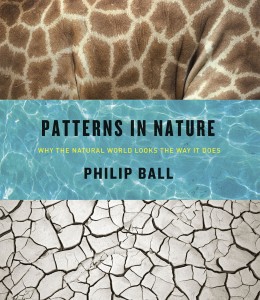Publishers Weekly on Patterns in Nature

Advanced praise for Philip Ball’s forthcoming Patterns in Nature: Why the Natural World Looks the Way It Does (April 2016),
from Publishers Weekly:
Acclaimed English science writer Ball (Invisible: The Dangerous Allure of the Unseen) curates a visually striking, riotously colorful photographic display of the most dramatic examples of the “sheer splendor” of physical patterns in the natural world. He lightly ties the work together with snippets of scientific history, using bits of physics, chemistry, and mathematics to show that although patterns in living beings can offer clear, functional evolutionary advantages, the small set of design elements that we can see—symmetries, branching fractals, spirals, flowing swirls, spots, and stripes—come from a basic set of organizing properties of growth and equilibrium seeking. Ball ranges across the whole spectrum of creation—from the living to the nonliving, and from the macroscopic to the microscopic—for displays of nature’s patterned beauty. He finds symmetry in grains of pollen, drops of falling water, and owl’s eyes; fractals in leaf veins, lungs, and nebulae; spirals in seashells, sunflowers, and cyclones; and flow patterns in wood grain, flocks of birds, and dunes on Mars. This is formidable eye candy for the I-love-science crowd, sure to spark a sense of impressed wonder at the beauty of our universe and our ability to photograph it.
To read more about Patterns in Nature, click here.